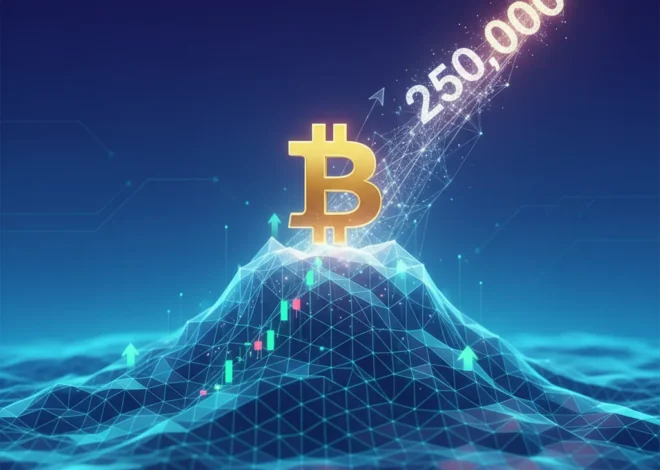
The Hidden Risk in Bitcoin: Why Thinning Liquidity Should Be on Every Investor’s Radar
In the fast-paced world of finance and investing, Bitcoin has once again captured the global spotlight. With the landmark approval of spot Bitcoin ETFs in the United States, prices have surged, and mainstream acceptance seems closer than ever. But beneath this bullish surface, a more complex and concerning trend is emerging—one that could pose a significant risk to traders, institutions, and the stability of the crypto market itself. The market’s lifeblood, its liquidity, is showing signs of becoming dangerously fragile.
While price charts dominate headlines, the true health of any financial market lies in its depth and resilience. Recent data reveals a significant thinning of Bitcoin’s market depth across major exchanges, meaning the market’s ability to absorb large trades without causing wild price swings is diminishing. This isn’t just a technical footnote for professional traders; it’s a fundamental issue with far-reaching implications for anyone involved in the digital asset space. This article will dissect what’s happening to Bitcoin’s liquidity, explore the underlying causes, and explain why this hidden risk should be a primary concern for every investor.
Decoding Market Liquidity: The Unsung Hero of Stable Markets
Before diving into the problem, it’s crucial to understand what “liquidity” truly means in a financial context. Put simply, liquidity is the ease with which an asset can be bought or sold at a stable price. Think of a market with high liquidity as a deep, wide ocean. You can drop a large boulder (a large trade) into it, and while it will make a splash, the overall water level won’t change much. Conversely, a market with low liquidity is like a shallow puddle. The same boulder would cause a massive, chaotic splash, displacing most of the water.
This market “depth” is visualized in an order book, which is a real-time list of all buy (bid) and sell (ask) orders. Several key metrics help us measure this health:
- Market Depth: This refers to the volume of buy and sell orders at various price levels. Deep markets have a high volume of orders stacked up, ready to absorb large trades.
- Bid-Ask Spread: This is the gap between the highest price a buyer is willing to pay and the lowest price a seller is willing to accept. A narrow spread is a hallmark of a highly liquid market.
- Slippage: This is the difference between the expected price of a trade and the price at which it is actually executed. In a thin market, a large buy order can quickly exhaust all the cheap sell orders, forcing the buyer to pay progressively higher prices and “slipping” the average execution price upwards.
–
–
A healthy market needs robust liquidity. It fosters confidence, reduces trading costs, and ensures price stability. When it evaporates, volatility spikes, and risk escalates dramatically.
The Alarming Trend: Bitcoin’s Liquidity Is Evaporating
The central concern today is that Bitcoin’s market depth is shrinking, and at a surprisingly rapid pace. According to in-depth market analysis, the amount of Bitcoin available within 2% of the mid-price on order books has seen a stark decline. This is the pool of immediately available assets that ensures smooth trading.
Data from leading crypto analytics firms shows that this 2% market depth has fallen from approximately 12,000 BTC in early March to just around 8,000 BTC recently (source). This represents a roughly 33% reduction in readily available liquidity in a very short period. What makes this trend particularly counterintuitive and alarming is that it has occurred during a period of rising prices and heightened public interest following the ETF approvals—a time when one would typically expect liquidity to increase, not decrease.
To put this into perspective, here is a simplified comparison of the market’s ability to absorb a large order before and after this decline:
| Market Condition | Market Depth (within 2% of mid-price) | Impact of a 1,000 BTC Market Order |
|---|---|---|
| Early March (High Liquidity) | ~12,000 BTC | Moderate price impact, lower slippage. The order is absorbed by a deep pool of existing bids/asks. |
| Present Day (Low Liquidity) | ~8,000 BTC | Significant price impact, high slippage. The order consumes a larger portion of the available liquidity, causing a more volatile price swing. |
This thinning of the order books means the “puddle” is getting shallower. A single large trade, whether from a whale or an institution, now has a much greater power to move the entire market, leading to the kind of flash crashes or dizzying spikes that undermine investor confidence.
Exceedingly Good Returns: How a 1960s Cake Brand Baked a Modern Financial Turnaround
The ‘Why’ Behind the Wane: Unpacking the Causes
There isn’t a single culprit behind this liquidity drain, but rather a confluence of factors reshaping the crypto landscape. Understanding them is key to grasping the new dynamics of the market.
1. Cautious Market Makers
Market makers are the backbone of liquidity. These are high-frequency trading firms that simultaneously place buy and sell orders to profit from the bid-ask spread, and in doing so, they create a deep and stable market. However, in the face of heightened volatility and regulatory uncertainty, many of these firms are becoming more cautious. They are widening their spreads and reducing the size of their orders to limit their own risk, which directly contributes to thinning the order books (source). When the professionals who provide liquidity step back, the market immediately becomes more fragile.
2. The ETF Effect: A Double-Edged Sword
The launch of spot Bitcoin ETFs was a monumental step for institutional adoption. However, it may be having an unintended side effect on traditional exchange liquidity. These ETFs source their Bitcoin through authorized participants and OTC (over-the-counter) desks, not necessarily from the public order books of exchanges like Binance or Coinbase. As billions of dollars flow into these ETFs, a significant portion of Bitcoin’s liquidity is being siphoned away from the on-exchange market where most retail and many professional traders operate. The demand is still there, but the liquidity is migrating to a different, less visible part of the financial technology ecosystem.
3. Capital Rotation within the Blockchain Ecosystem
The world of blockchain is not a monolith. Capital and attention are constantly shifting between different projects and technologies. For instance, recent major upgrades on other networks, such as Ethereum’s Dencun upgrade, can attract significant capital and market-making activity away from Bitcoin (source). Traders and liquidity providers are always seeking the next big opportunity, and this rotational dynamic can temporarily drain resources from the Bitcoin market, further contributing to its fragility.
My prediction is that we are entering a period of structurally higher volatility. The market will be more susceptible to shocks until a new equilibrium is found. Liquidity won’t vanish; it will re-emerge in different forms and venues. The challenge for the industry is to build bridges between these fragmented pools of liquidity. For investors, the key takeaway is that the old rules of trading may no longer apply. Simply watching the price is not enough; monitoring on-chain data and order book depth has become more critical than ever to navigate these treacherous waters. This isn’t a sign of failure, but a classic “growing pain” of a maturing market.
The Ripple Effect: What Thin Liquidity Means for You
This technical market issue has tangible consequences for everyone, from individual hobbyists to the largest financial institutions.
- For Retail Investors: The most immediate impact is higher costs and risk. When you place a market order, you are more likely to experience significant slippage, meaning you get a worse price than you expected. The increased volatility also means a greater chance of being stopped out of a position or seeing dramatic, unpredictable swings in your portfolio’s value.
- For Institutional Investors: Fragile liquidity is a major operational headache. Institutions need to execute multi-million dollar trades, and doing so in a thin market is like trying to navigate a supertanker through a narrow canal. It’s slow, expensive (due to slippage), and risks telegraphing their moves to the rest of the market. This could act as a deterrent for further institutional capital entering the space directly on exchanges.
- For the Broader Economy: As Bitcoin becomes more integrated into the global economy, its stability matters more. A market prone to liquidity-driven flash crashes poses a systemic risk. It undermines the narrative of Bitcoin as a reliable “digital gold” or a stable store of value and could give regulators pause as they consider the role of digital assets in the broader financial system.
–
–
Navigating the Shallows: Strategies and Future Outlook
While the situation is concerning, it’s not hopeless. Both investors and the market can adapt. For traders, this environment demands a more sophisticated approach:
- Prioritize Limit Orders: Instead of market orders that execute at any price, use limit orders to specify the maximum price you’re willing to pay or the minimum you’re willing to accept.
- Break Up Large Trades: Use algorithmic trading strategies like TWAP (Time-Weighted Average Price) to break a large order into smaller pieces and execute them over time, minimizing market impact.
- Monitor Market Depth: Don’t just look at the price. Use trading tools to monitor the health of the order book. A thinning book can be an early warning sign of impending volatility.
–
–
Looking ahead, the market will likely evolve. We may see the rise of new fintech platforms or decentralized exchanges (DEXs) designed to pool liquidity from various sources. The firms behind the ETFs also have a vested interest in fostering a more stable and liquid market, which could lead to new financial products and infrastructure designed to bridge the gap between institutional and on-exchange liquidity.
The Stealth Sell-Off: Unmasking the Hidden Corporate Debt Threat to Bitcoin's Price
Conclusion: Look Deeper Than the Price
The story of Bitcoin in 2024 is one of paradox. On the one hand, its price and mainstream acceptance have reached new heights. On the other, its underlying market structure has become more fragile than it has been in years. This decline in liquidity is a critical development that demands attention from anyone with a stake in the crypto ecosystem.
It serves as a powerful reminder that in the world of investing, the headline numbers rarely tell the whole story. The health of a market is not just its price, but its depth, resilience, and ability to function under pressure. As Bitcoin continues its journey of maturation, understanding and monitoring its liquidity will be one of the most important factors separating successful navigation from a costly shipwreck.


